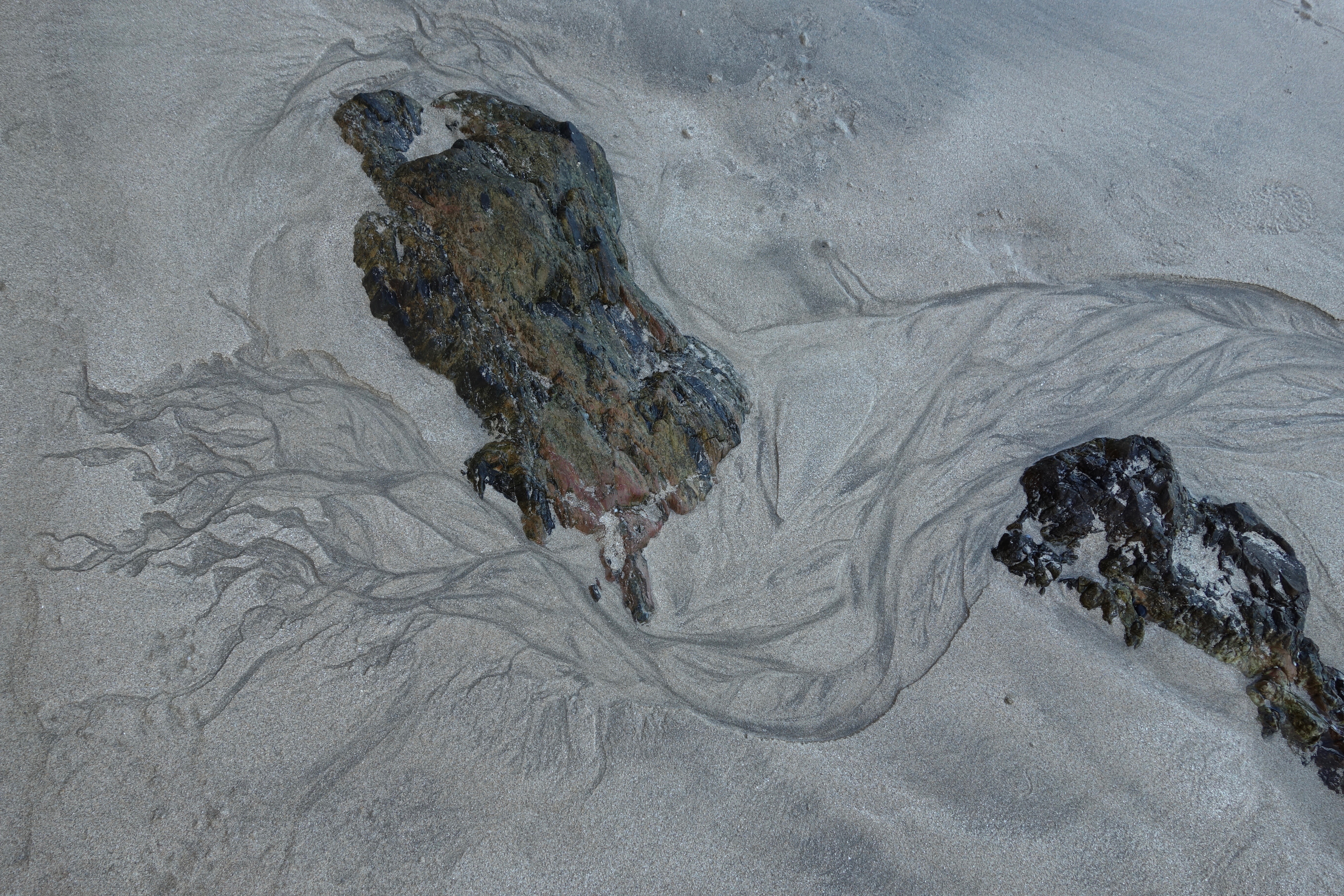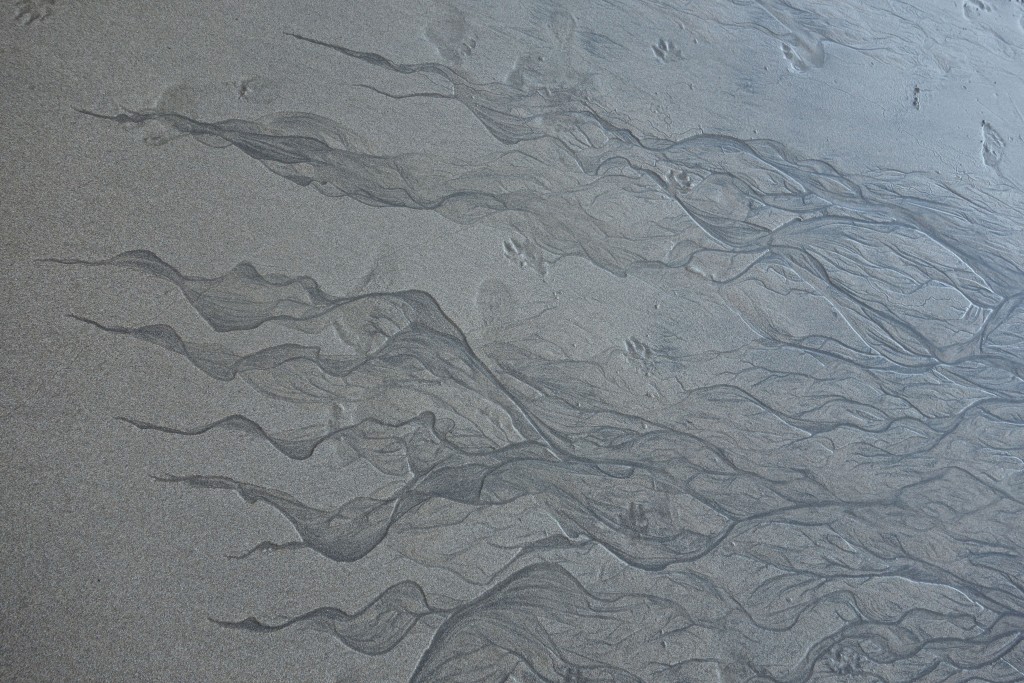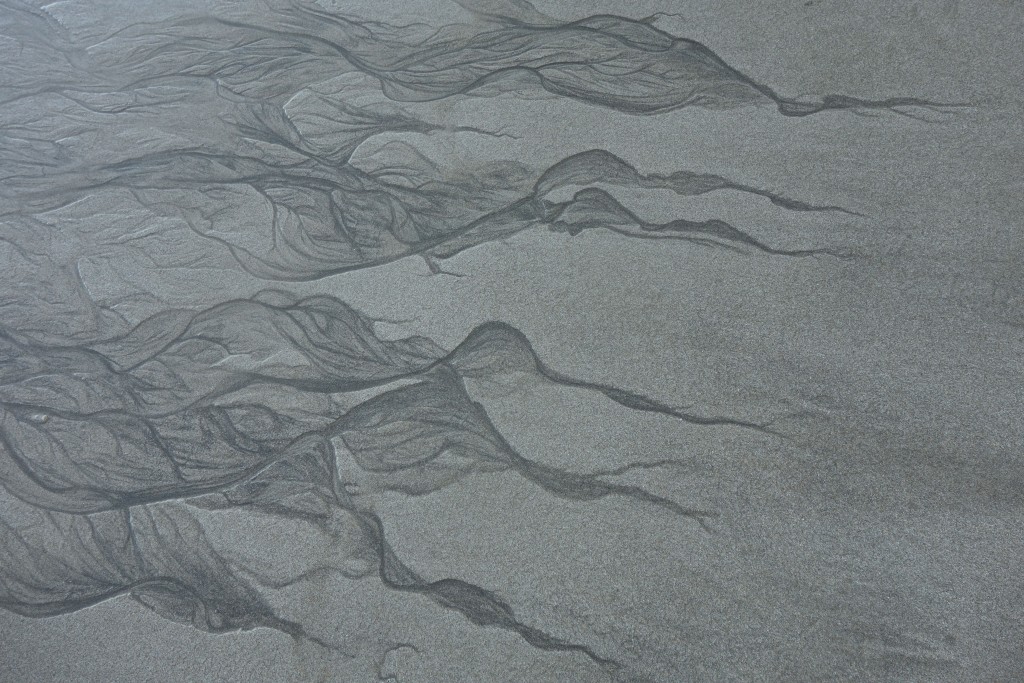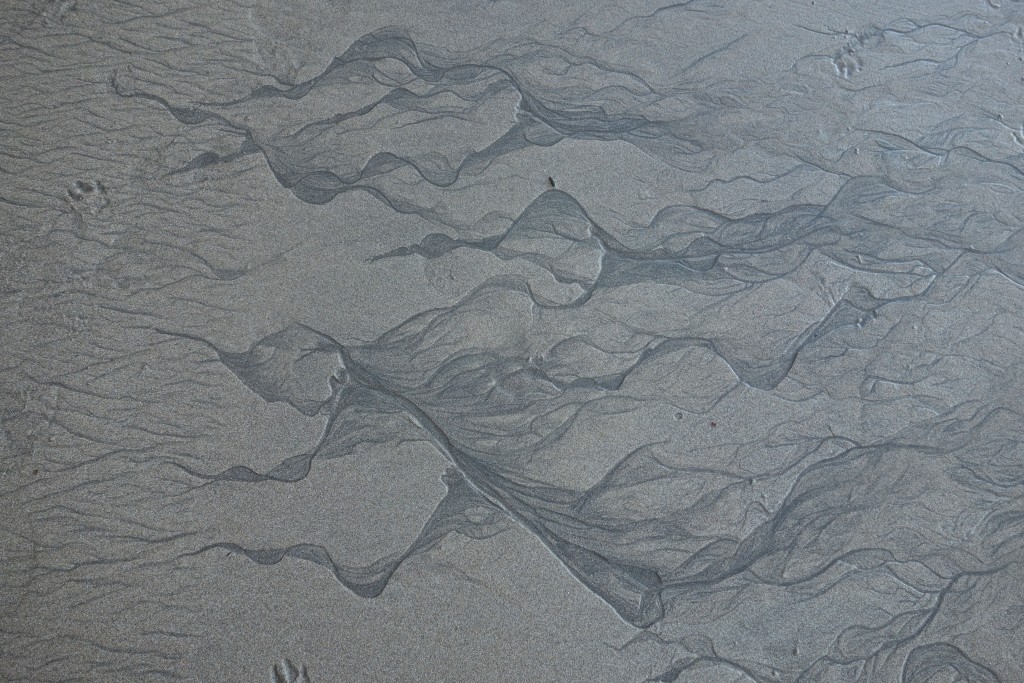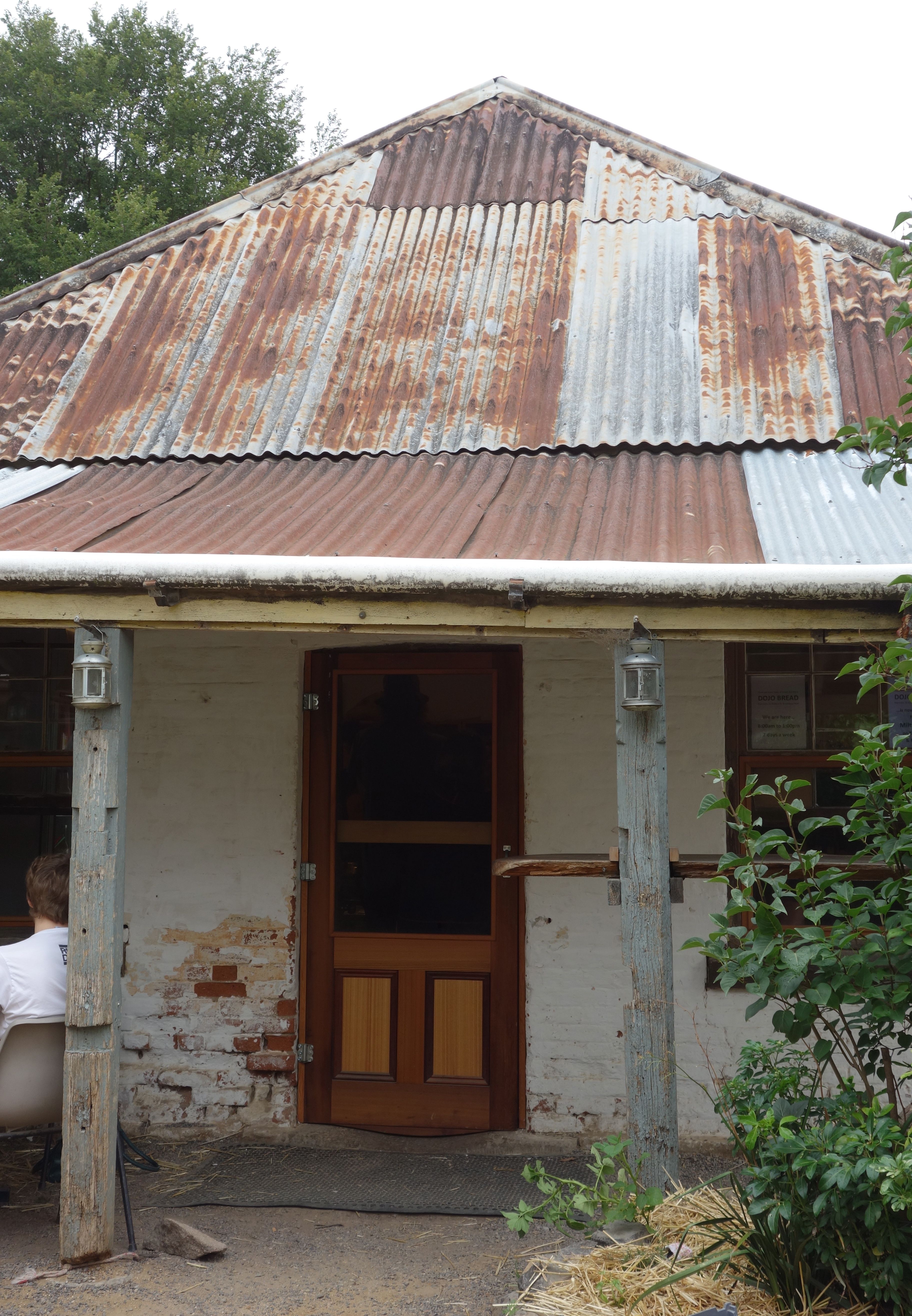A writing exercise. Describe nature imitating art.
I thought how pleasant it would be to pass through the quiet town and take a solitary ramble on the sands while half the world was in bed. […] Nothing else was stirring – no living creature was visible besides myself. My footsteps were the first to press the firm, unbroken sands; – nothing before had trampled them since last night’s flowing tide had obliterated the deepest marks of yesterday.
Agnes Grey, Anne Brontë
Late afternoon, south coast, New South Wales. The last waves of the ebb tide roll in, low impact waves thinning out as they feebly stretch their way up the shore. They wash back, and watery fingers gouge long grooves, dragging rutile particles from a pinpoint, down and out in fine sinuous curves, crisscrossing and lying darkly over each other. Peppery grains gather at the edges of the patterns, sharpening the lines. People and dogs tread obliviously over the etchings; not one is without a footprint. On this beach, unmined for mineral sands, the waves retreat and carry some of the lighter sand into the ocean, leaving rutile behind, a heavy mineral that resists movement and forms patterns like fine charcoal sketches. Mined beaches have the rutile sifted out and the whiter quartz grains put back where they were found, making a new beach that is strangely light, where there are no artworks at sunset.
Next morning, I go early to the beach to look for lines in the sand. They’re all gone, the art has been washed away and the rutile is no longer gathering in dark rivulets. The night tide has stirred and blended it with the regular quartz grains. As I, like Agnes, make the first footprints in the sand, I see the dark specks that soften the glare. In the late afternoon the sketches will reappear, no two lines ever twisting the same way twice, not drawn with a pencil or brush or sculptor’s tool, but with the ebb tide.
*****
PS I posted this piece yesterday about nature imitating art, and today the WordPress Photo Challenge is… Life imitates art. That’s a coincidence.

